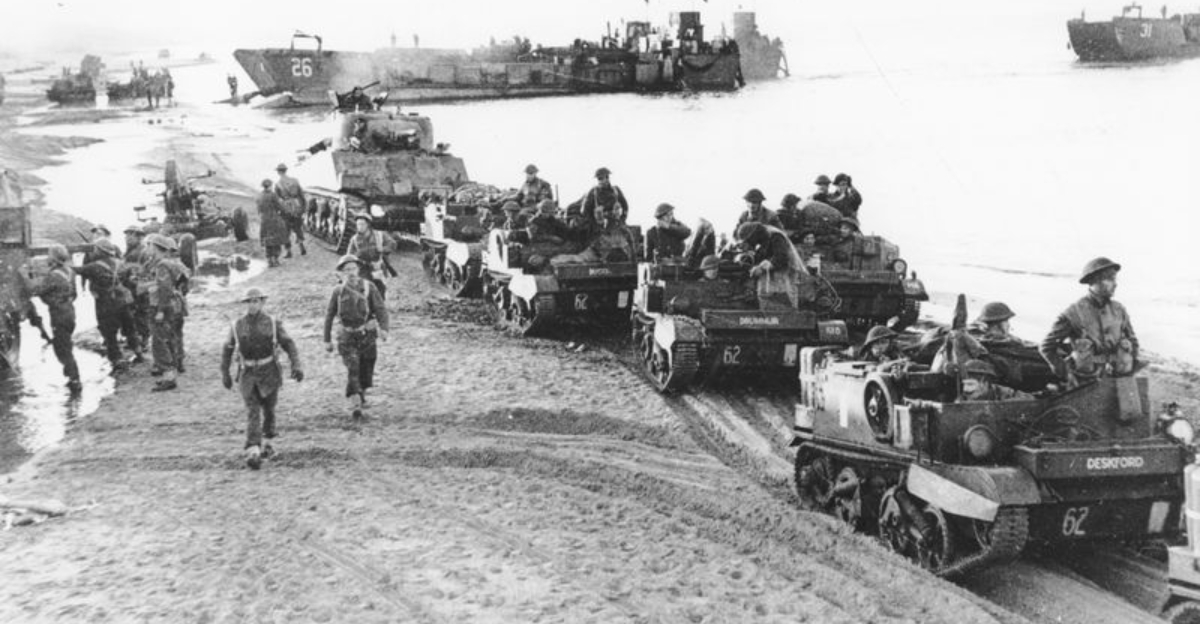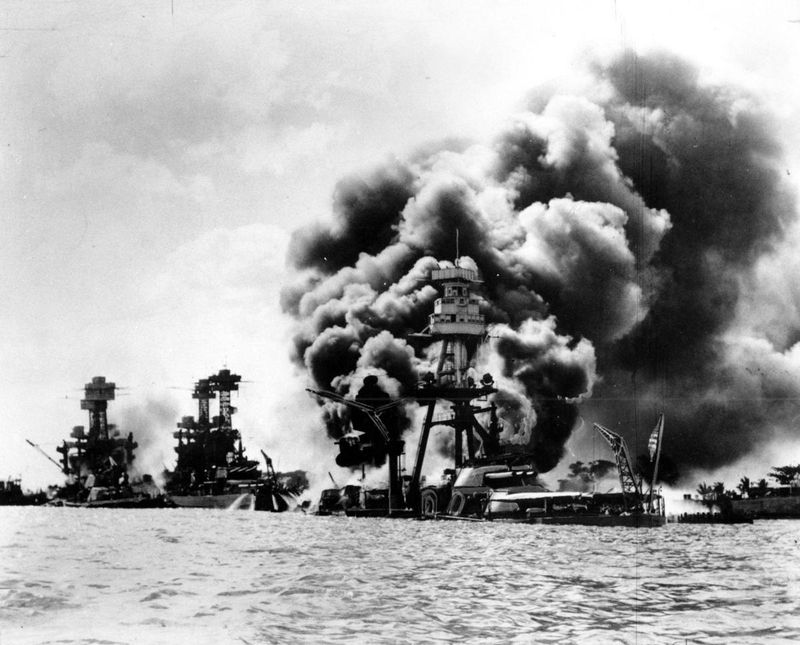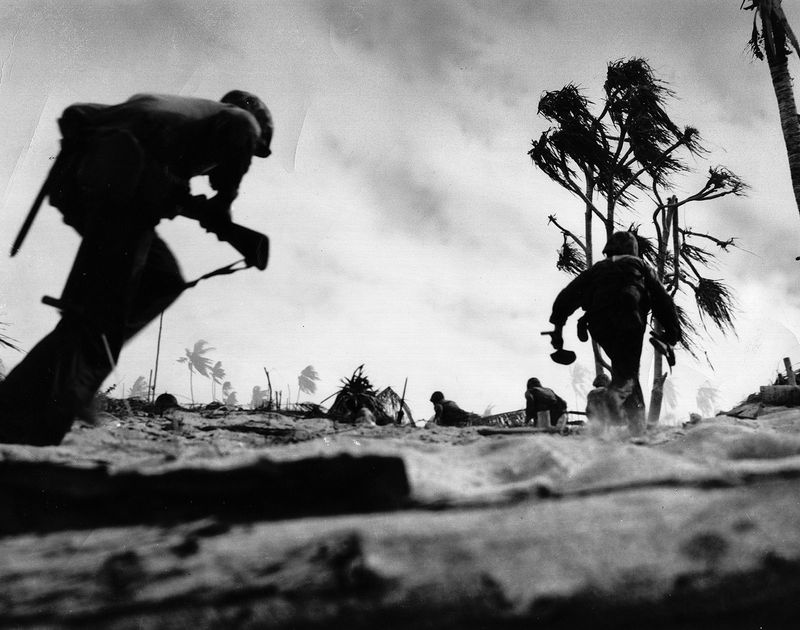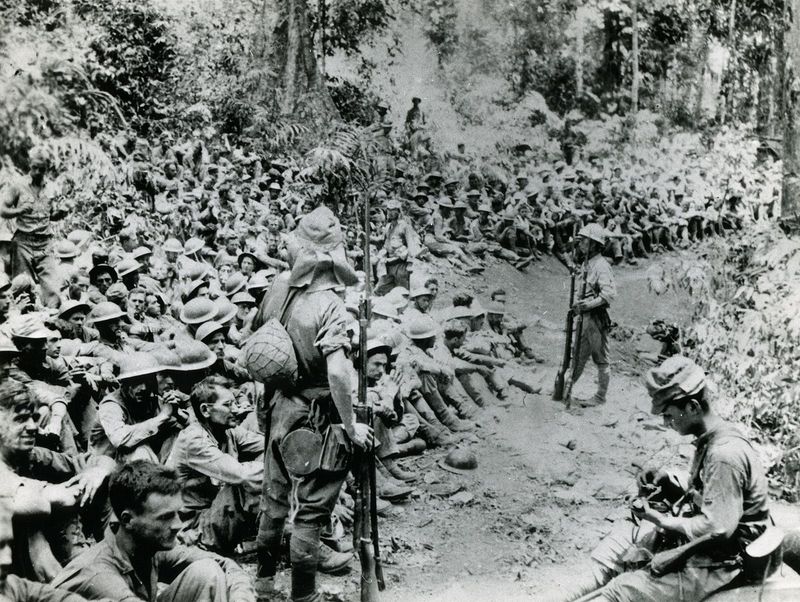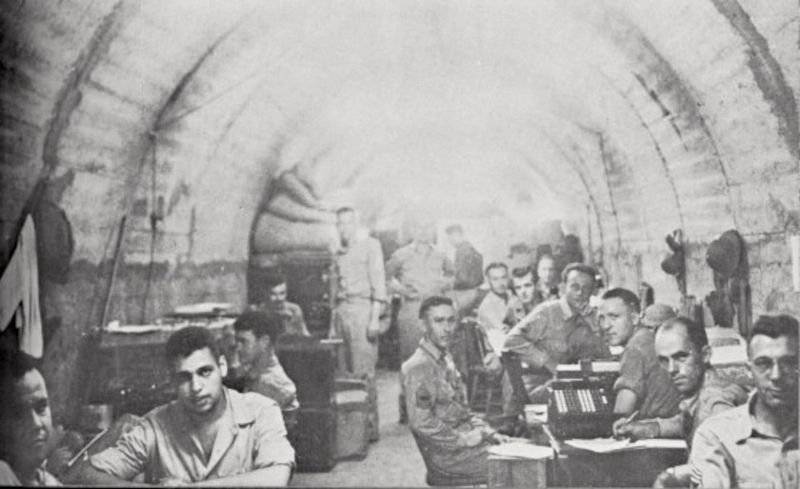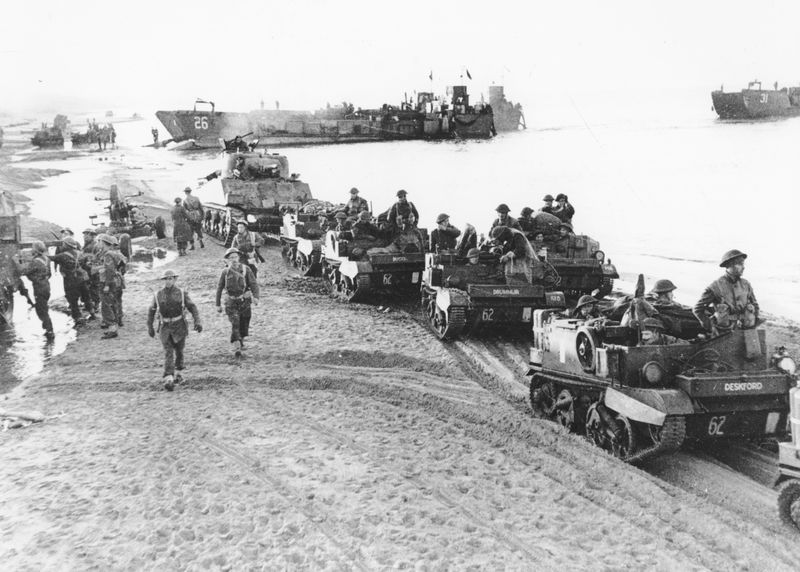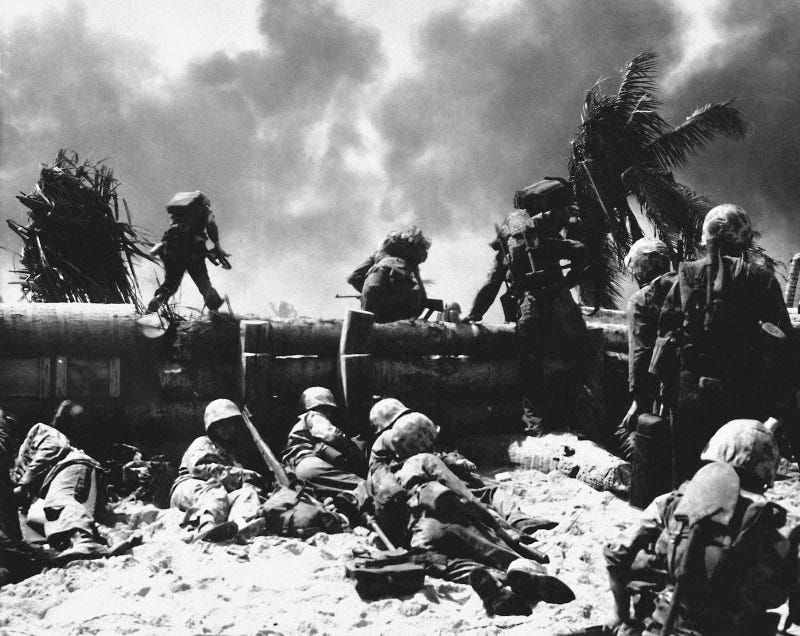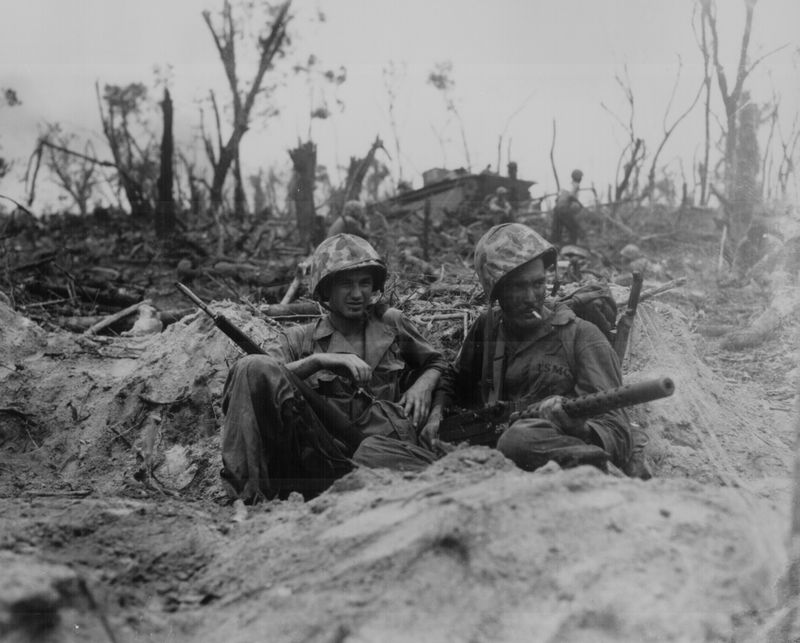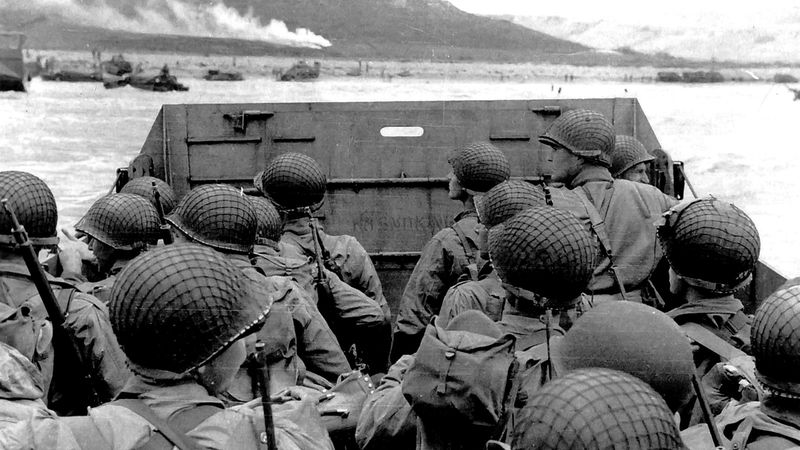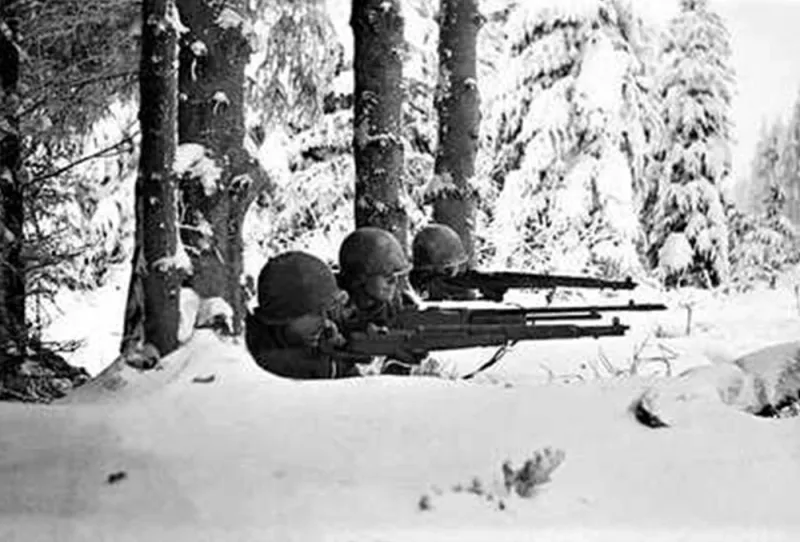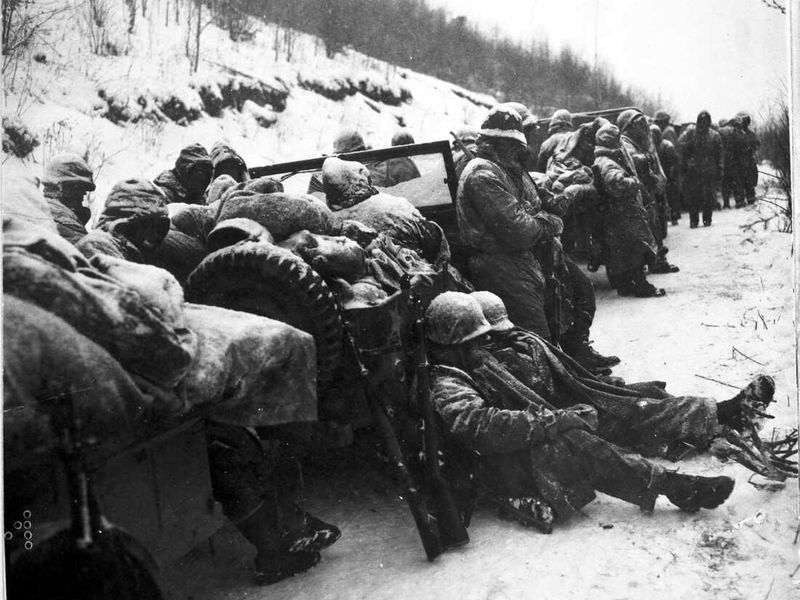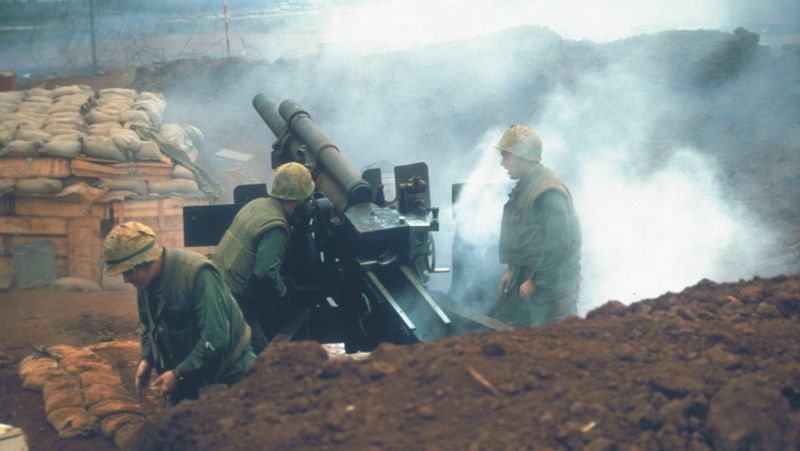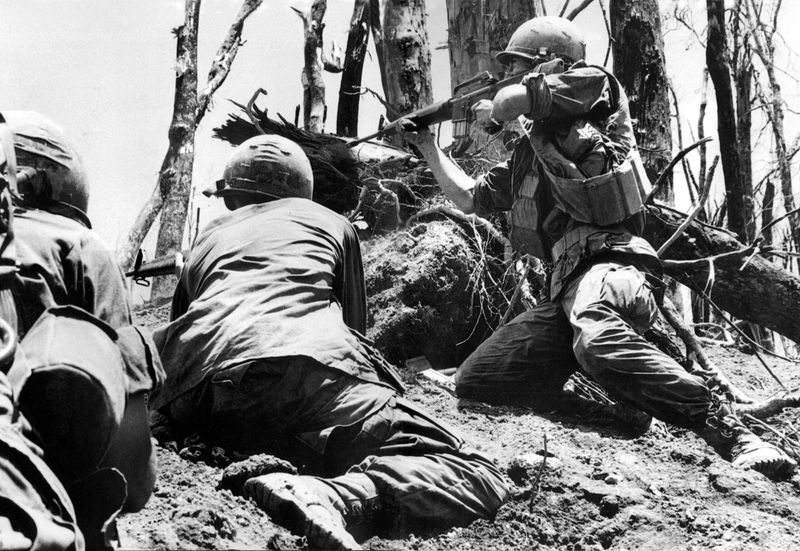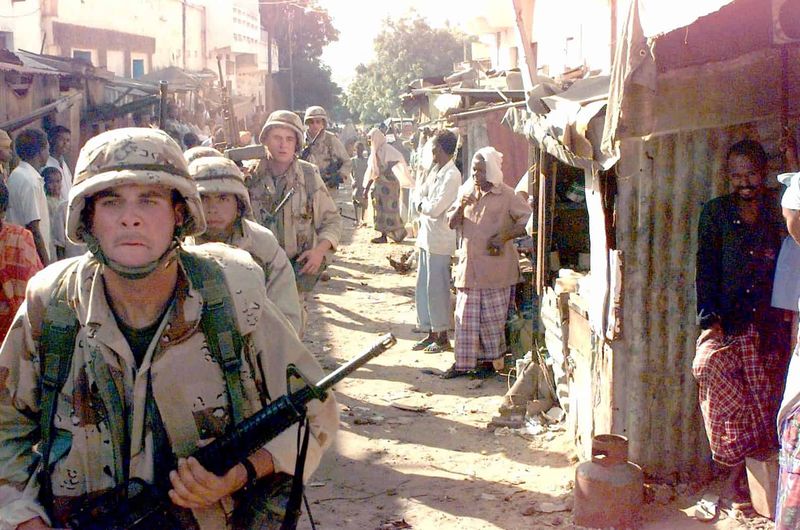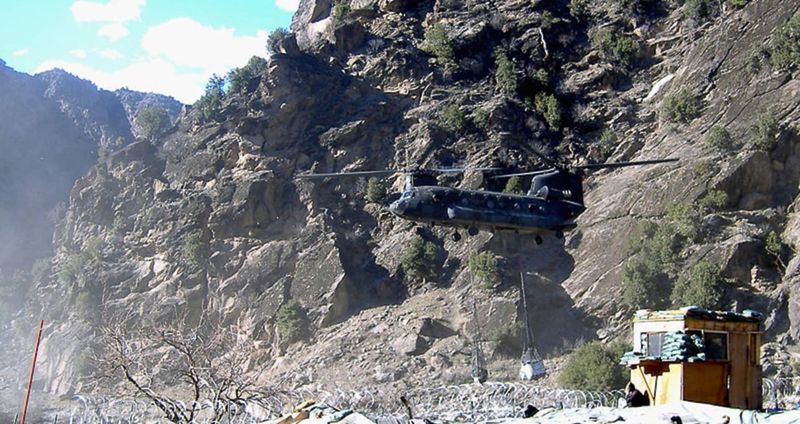War reveals the darkest and brightest aspects of humanity, especially during battles where victory seems impossible. Soldiers face overwhelming odds, terrible conditions, and the constant threat of death, yet somehow find the courage to keep fighting.
These 17 battles represent moments when American troops faced seemingly impossible situations – some ended in victory, others in defeat, but all showcased extraordinary human endurance.
1. Pearl Harbor: When Sunday Morning Turned to Hell
Sailors jumped from burning ships as Japanese planes roared overhead. The attack came without warning on December 7, 1941, catching the Pacific Fleet at anchor and mostly unprepared.
Men fought with whatever weapons they could find. Some manned anti-aircraft guns in their underwear while others swam through burning oil to rescue comrades.
The USS Arizona sank in minutes, entombing 1,177 sailors. Despite the devastation, American forces rallied remarkably – salvaging ships, recovering bodies, and preparing for a war that would transform the world. The battle cry “Remember Pearl Harbor” would fuel American determination throughout World War II.
2. Wake Island: The Alamo of the Pacific
A tiny Pacific atoll became the stage for one of history’s most valiant last stands. Just 449 Marines, sailors, and civilian contractors faced the might of Japan’s invasion force in December 1941.
Armed with outdated weapons and limited ammunition, these defenders managed to sink two Japanese destroyers and damage eight other vessels. They held their ground for 15 grueling days, fighting from hastily built fortifications while surviving on dwindling supplies.
Commander Winfield Cunningham’s famous response to surrender demands became legendary: “Send us more Japs!” Eventually overwhelmed by sheer numbers, the garrison finally surrendered on December 23, having fought until hope itself ran out.
3. Bataan: The Death March’s Brutal Prelude
Malaria-ridden American and Filipino troops fought on empty stomachs. The battle for Bataan Peninsula in early 1942 devolved into a desperate struggle for survival as supply lines were cut and reinforcements never arrived.
Soldiers subsisted on half-rations, then quarter-rations, eventually eating horses, mules, and even snakes. Medical supplies vanished while tropical diseases spread like wildfire through the ranks.
For three months, these starving men somehow held off the Japanese advance. When surrender finally came on April 9, 1942, it wasn’t the end of their suffering – it was merely the beginning. The infamous Bataan Death March would claim thousands more lives through unspeakable brutality.
4. Corregidor: Last Stand in Manila Bay
Underground tunnels became both shelter and tomb. Nicknamed “The Rock,” this fortress island in Manila Bay served as General MacArthur’s headquarters until he was ordered to evacuate to Australia, uttering his famous “I shall return” promise.
Those left behind endured constant bombardment from Japanese artillery. The island’s surface was transformed into a cratered moonscape as 1,800 shells fell daily during the worst periods.
American and Filipino defenders lived in the Malinta Tunnel’s damp confines, emerging to man guns despite overwhelming firepower directed against them. After holding out for five months, Corregidor’s garrison finally surrendered on May 6, 1942, ending organized resistance in the Philippines until MacArthur’s return two years later.
5. Guadalcanal: Jungle Hell in the Solomon Islands
Marines called it “Green Hell” for good reason. August 1942 marked America’s first major offensive in the Pacific, landing on a malaria-infested island where Japanese forces had been building an airfield.
Nighttime naval battles lit up the waters offshore while on land, Marines fought in suffocating jungle heat. Supply shortages became so severe that troops scavenged enemy rations and equipment.
The Japanese conducted nighttime “banzai” charges that turned into hand-to-hand combat in pitch darkness. For six brutal months, both sides suffered from disease, starvation, and combat exhaustion until February 1943, when American forces finally secured this vital stepping stone toward Japan.
6. Anzio: Trapped on Hitler’s Doorstep
The beaches of Anzio should have been a springboard to Rome. Instead, they became a killing zone. Allied forces landed virtually unopposed on January 22, 1944, achieving complete surprise against German forces in Italy.
Cautious leadership squandered this advantage, allowing German Field Marshal Kesselring to rush reinforcements and trap the landing force. Allied troops found themselves pinned down on a narrow beachhead with their backs to the sea.
German artillery on the surrounding hills rained down shells on positions so exposed that soldiers called it “living in a bowl of fire.” For four months, men endured constant shelling until the breakout finally came in May – a textbook example of how even successful landings can become nightmares.
7. Tarawa: 76 Hours of Bloody Sand
Marine landing craft ground to a halt on unexpected coral reefs. Hundreds of men were forced to wade through chest-deep water under withering Japanese fire during the November 1943 assault on this tiny Pacific atoll.
The island was just 800 yards wide but defended by 4,500 well-prepared Japanese troops. Concrete bunkers, mines, and barbed wire turned the beach into a killing field. Marines who made it ashore found little cover on the flat terrain.
The three-day battle produced horrific casualties – over 1,000 Marines killed and more than 2,000 wounded. The tiny island was secured at tremendous cost, leading military planners to reconsider amphibious assault tactics and triggering public shock at home when photographs of dead Marines washing in the surf were published.
8. Peleliu: The Forgotten Inferno
Temperatures soared to 115 degrees as Marines battled across razor-sharp coral ridges. This September 1944 battle was supposed to last four days but stretched into a two-month nightmare.
Japanese defenders had created an intricate network of caves and tunnels throughout the island’s Umurbrogol Mountain – nicknamed “Bloody Nose Ridge” by Marines. Flamethrowers became essential weapons as standard rifles and grenades proved ineffective against these fortifications.
Water was so scarce that wounded men died of dehydration while waiting for evacuation. The 1st Marine Division suffered nearly 40% casualties before securing the island. Military historians later questioned whether this costly battle was even strategically necessary, making the sacrifice even more poignant.
9. Omaha Beach: D-Day’s Deadliest Shore
Bodies floated in the red-tinged surf as landing craft disgorged more men into the killing zone. The morning of June 6, 1944, turned into a slaughter as American troops faced unexpected levels of German resistance on this Normandy beach.
Strong currents pushed landing craft off course. Engineering teams meant to clear beach obstacles were decimated before completing their mission. Soldiers carrying 80 pounds of equipment struggled through water only to face intact German defenses.
Colonel George Taylor’s famous words – “Two kinds of people are staying on this beach: the dead and those who are going to die” – rallied survivors to push inland. Against all odds, small groups of determined men eventually secured the beachhead, opening the door to Europe’s liberation.
10. Battle of the Bulge: Frozen Hell in the Ardennes
Snow-covered foxholes became frozen graves for many American soldiers. Hitler’s surprise December 1944 offensive in Belgium’s Ardennes Forest caught Allied forces completely off guard, creating a massive bulge in their lines.
Temperatures plunged below zero as American units found themselves surrounded, cut off from supplies and reinforcements. Soldiers suffered frostbite so severe that many required amputations.
The 101st Airborne Division’s defense of Bastogne became legendary, with Brigadier General McAuliffe’s one-word reply to surrender demands – “Nuts!” – embodying American defiance. Despite overwhelming odds and brutal conditions, American forces held firm until Patton’s Third Army could break through, ultimately turning what could have been catastrophic defeat into victory.
11. Chosin Reservoir: Frozen Chosin’s Brutal March
“We’re not retreating, we’re just advancing in a different direction,” declared Marine General O.P. Smith. November 1950 found American forces deep in North Korea when 120,000 Chinese troops suddenly attacked in sub-zero temperatures.
The thermometer plunged to -30°F, causing weapons to freeze and vehicle batteries to fail. Marines wrapped their feet in newspaper as frostbite casualties exceeded combat wounds. Medical supplies froze solid.
Surrounded and outnumbered, the 1st Marine Division fought their way out along a narrow mountain road, bringing their dead and wounded while destroying equipment that couldn’t be transported. This 78-mile fighting withdrawal against overwhelming odds became one of the most remarkable feats in military history – a retreat that felt more like victory.
12. Khe Sanh: The Vietnam Siege That Wouldn’t End
Red clay dust covered everything and everyone. For 77 days in early 1968, 6,000 Marines endured constant bombardment at their remote combat base near the Laotian border.
North Vietnamese forces pounded the base with up to 1,300 shells daily while surrounding it with an estimated 40,000 troops. Supply planes braved intense anti-aircraft fire to drop essential provisions to the defenders.
Underground bunkers became home as Marines rarely ventured above ground during daylight. The psychological pressure was immense – wondering each day if this would be when the massive ground assault finally came. President Johnson kept a model of Khe Sanh in the White House Situation Room, obsessively monitoring what had become a symbolic test of American resolve.
13. Hamburger Hill: The Mountain That Ate Men
Soldiers nicknamed it “Hamburger Hill” because that’s what humans became there – ground meat. This May 1969 battle centered on Hill 937 in Vietnam’s A Shau Valley, a nondescript mountain that became infamous for its cost in American lives.
For ten days, American troops made frontal assaults up steep slopes against well-entrenched North Vietnamese forces. Monsoon rains turned the terrain into a muddy nightmare while dense vegetation provided perfect cover for enemy ambushes.
After capturing the hill at the cost of 72 American lives and 372 wounded, U.S. forces abandoned it just weeks later. This tactical decision fueled growing anti-war sentiment at home, raising painful questions about sacrificing young men for terrain that wasn’t even held.
14. Mogadishu: When a Raid Became a Rescue Mission
Rangers and Delta Force operators rappelled from hovering Black Hawk helicopters into a hornet’s nest. What was planned as a 30-minute mission to capture Somali warlord lieutenants on October 3, 1993, turned into an 18-hour urban nightmare.
When two helicopters were shot down by RPGs, the mission objective instantly changed to rescuing the crews. American forces found themselves surrounded by hundreds of armed Somali militiamen and civilians in narrow streets and alleyways.
Cut off from support, soldiers formed a desperate defensive perimeter around crash sites. The battle claimed 18 American lives and wounded 73 others. Images of dead American soldiers being dragged through streets shocked the nation and dramatically altered U.S. foreign policy regarding humanitarian interventions.
15. Fallujah: House-to-House Hell in Iraq
Marines called it the most intense urban combat since Vietnam. November 2004 saw American forces launch Operation Phantom Fury to retake the insurgent-held city of Fallujah in Iraq’s Anbar Province.
Every building potentially contained booby traps, snipers, or ambushes. Marines moved through the city in small teams, clearing each structure room by room. Insurgents had transformed ordinary homes into fortresses with reinforced fighting positions and escape tunnels.
The battle’s intensity was captured by a combat photographer’s image of a wounded Marine smoking a cigarette after a firefight – his face a mixture of exhaustion and determination. Nearly 100 Americans died securing Fallujah, with the city left largely in ruins from the fighting.
16. Operation Red Wings: Ambush on Afghan Mountaintops
Four Navy SEALs against an estimated 80-100 Taliban fighters. This June 2005 reconnaissance mission in Afghanistan’s Hindu Kush mountains went catastrophically wrong when local goat herders stumbled upon the SEAL team’s hiding position.
After releasing the civilians, the team was quickly surrounded and attacked from superior positions. Communications failed as they tried to call for support. Despite multiple wounds, the men continued fighting while attempting to reach higher ground.
Only one team member, Marcus Luttrell, survived after being protected by local villagers. A rescue helicopter was shot down, killing all 16 special operations personnel aboard. This operation, later depicted in the book and film “Lone Survivor,” became one of the deadliest days in SEAL history.
17. COP Keating: Trapped in Afghanistan’s Valley of Death
Whoever designed Combat Outpost Keating broke every rule of military defense. Established at the bottom of a steep valley in Afghanistan’s Nuristan Province, the base was surrounded by mountains offering perfect firing positions for Taliban fighters.
On October 3, 2009, approximately 300 Taliban launched a coordinated attack against just 53 American defenders. Enemy fighters achieved superior positions and poured fire into the outpost from three sides.
The base’s vulnerable position meant air support was difficult to deliver effectively. Despite being vastly outnumbered and in indefensible terrain, American forces repelled the attack through extraordinary courage. Eight soldiers died and 27 were wounded, but their heroism prevented the base from being overrun – with two defenders receiving the Medal of Honor.
